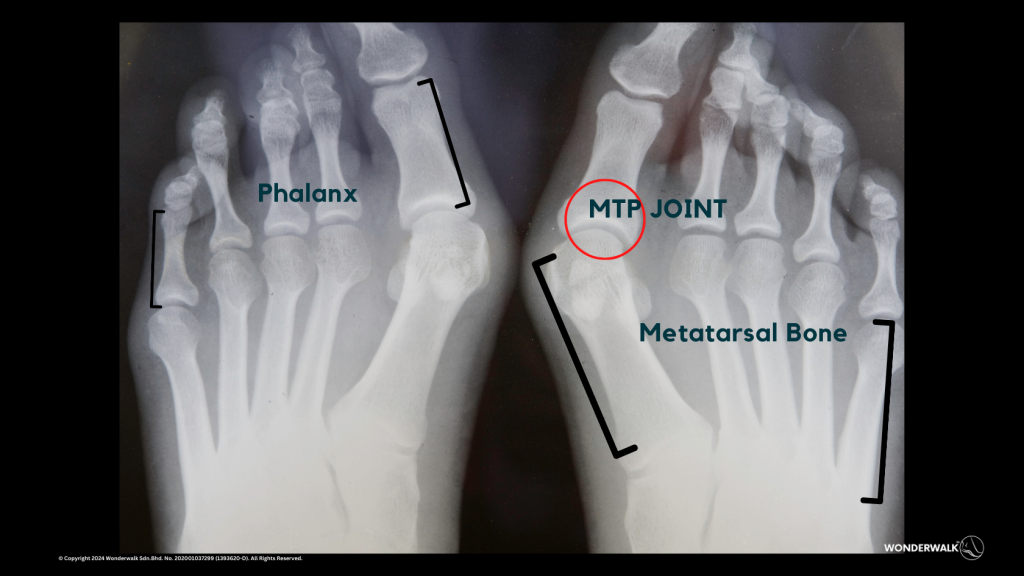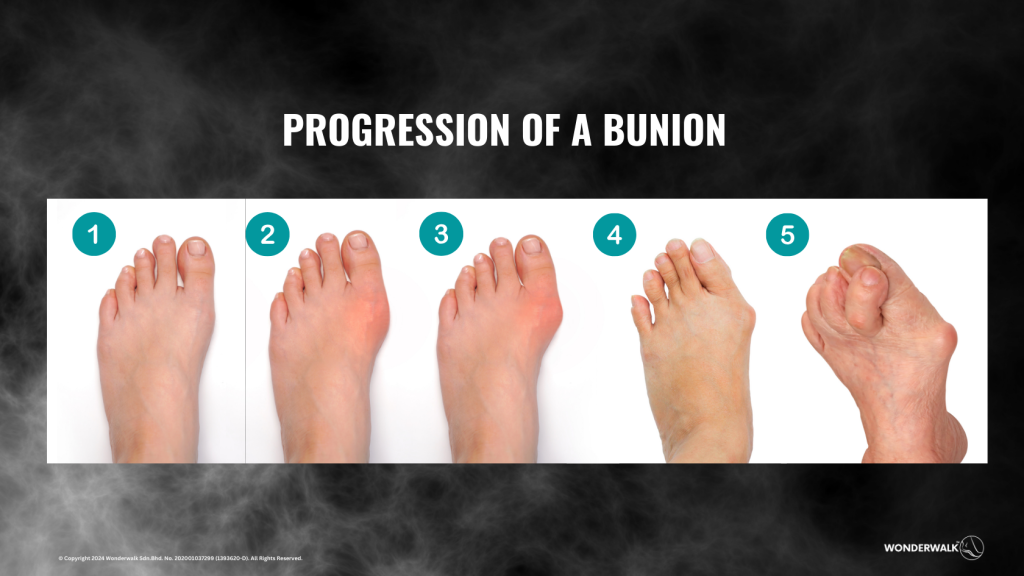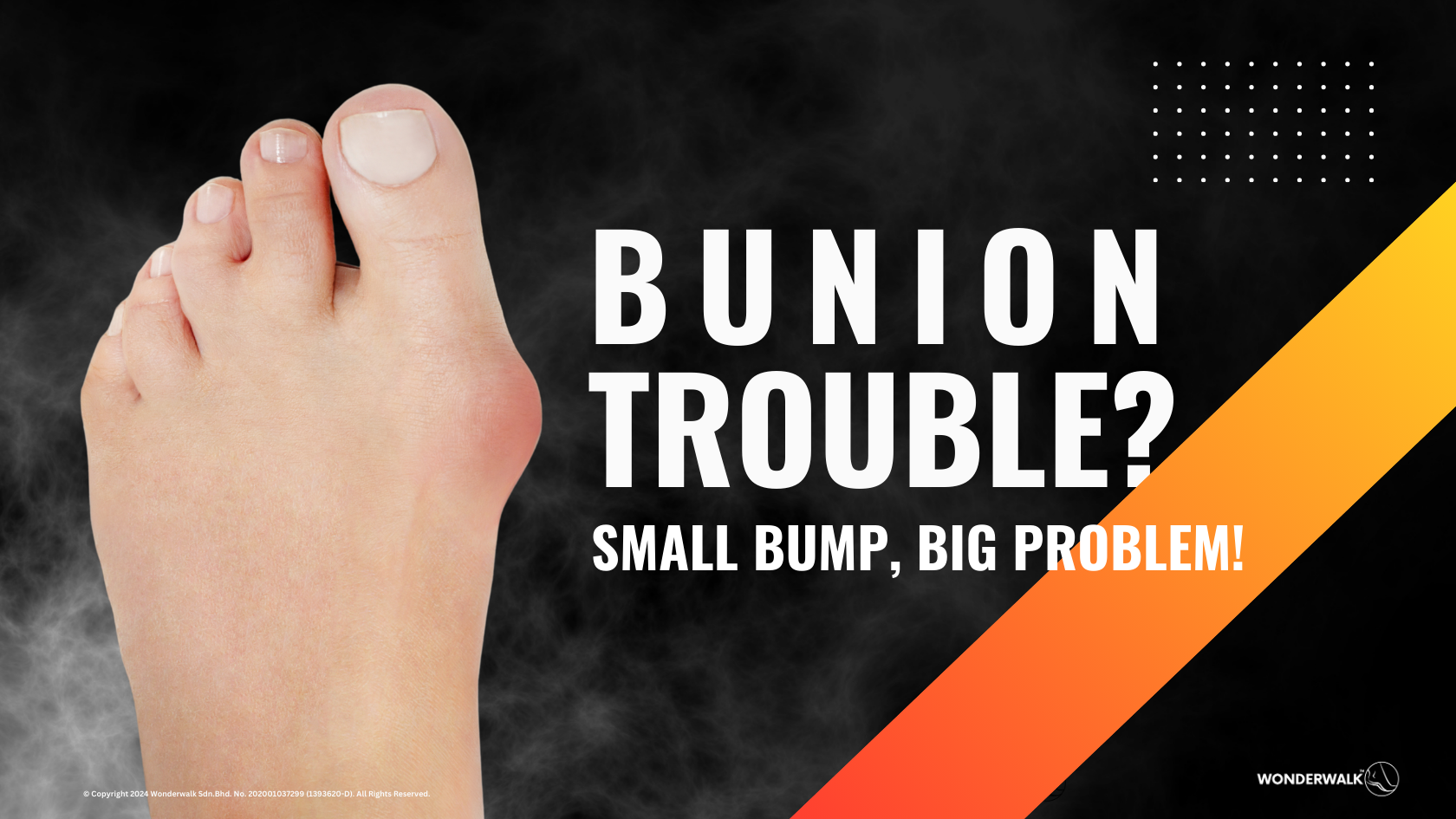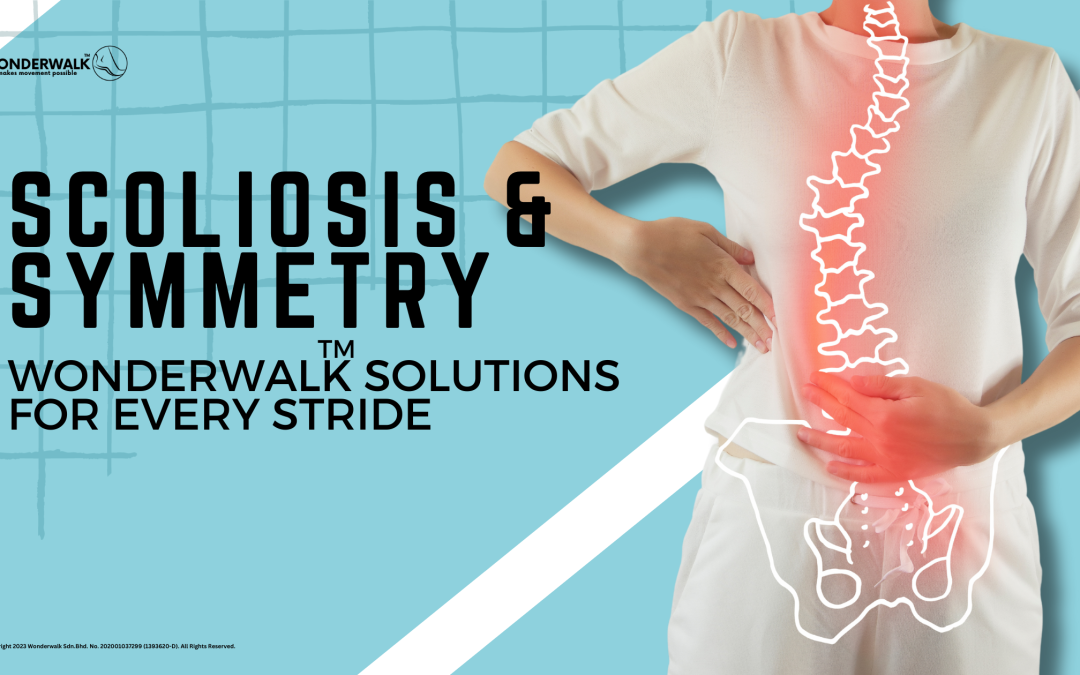Bunions are one of the most common foot deformities, yet they are often misunderstood and underestimated. What starts as a minor bump on the side of your foot can quickly escalate into a painful and debilitating condition, affecting every step you take and potentially leading to surgery.
What is a Bunion?
A bunion, also known as Hallux Valgus, is a painful bony lump that forms on the outside of the big toe due to misalignment of the Metatarsophalangeal (MTP) joint. This misalignment occurs over years of pressure on the big toe joint, leading to the joint angling out from the foot.
Understanding the MTP Joint

The MTP joint connects one of your toes (a phalangeal bone or phalanx) to a long bone in your foot (a metatarsal bone). Misalignment due to poor posture or poorly fitting shoes changes how body weight is distributed, placing extra pressure on the MTP joint. This can lead to inflammation, resulting in pain and tenderness.
What Causes Bunions?
Genetic Predisposition: Some people inherit a tendency to develop bunions due to the shape and structure of their feet.
Misalignment of the MTP Joint: Altered foot biomechanics can lead to joint misalignment.
Improper Footwear: Repeatedly squeezing feet into narrow, pointy footwear can exacerbate the problem. High heels with pointy toes are especially problematic, explaining why bunions are more common in women than men.
The Progression of a Bunion

Bunions start small but can worsen over time. As they grow, the MTP joint flexes with every step, leading to:
Severe Pain and Discomfort: As the bunion grows, it can cause intense pain, making walking and wearing shoes difficult.
Altered Gait and Balance: A misaligned big toe impacts your ability to walk properly, leading to balance issues and an altered gait.
Compensatory Problems: Avoiding bunion pain may lead to walking pattern adjustments, causing strain on other body parts and resulting in knee, hip, and back issues.
Flexible vs Rigid Bunions
Flexible Bunions: When the joints are still mobile, there’s a critical window for correction. Wonderwalk bespoke insoles can effectively reduce the bunion’s angle, halting its progression and alleviating pain.
Rigid Bunions: With reduced joint flexibility, rigid bunions are more challenging but not hopeless. While they may cause ongoing discomfort, Wonderwalk bespoke insoles can stabilize the condition and prevent it from worsening further.
How Wonderwalk Can Help?
Wonderwalk bespoke insoles offer a non-invasive therapeutic solution:
Correct Alignment: Our tailored insoles help realign your foot structure, reducing bunion progression and promoting proper biomechanics.
Restore Functionality: Enhance your balance and walking efficiency by addressing the root cause of misalignment.
Prevent Surgery: By tackling bunion issues early, our insoles can help maintain mobility and potentially avoid the need for invasive procedures.



